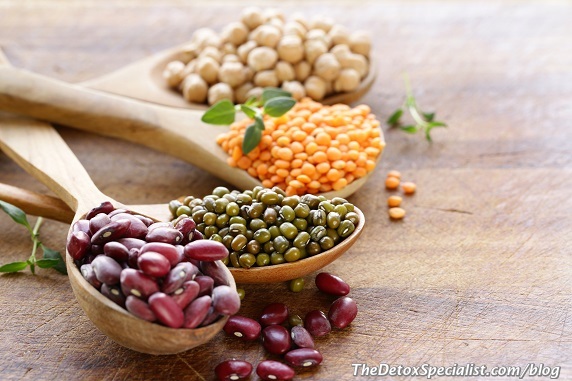
The saying that “You are what you eat”, can certainly apply in this day and age. We absorb such huge quantities of toxins through food, that our body, which works hard to get rid of them through a very sophisticated detox system, is not always able to do so. Unproccesed toxins start storing in our cells, soft tissues and muscles, overwhelming our entire immune system.
As people become more aware of the havoc accumulated toxins can wreak in their bodies, they search for ways to avoid unhealthy foods and adopt a healthy lifestyle.
As a result, detox has become big business. There are many gimmicky detox programs on the market promising guaranteed and quick results, but experience shows that the best and safest way to self-cleanse and remain toxin-free is through a modern detox diet which is based on foods which support the detox system.
What are plant lectins?
There are many different diets recommended for a detox program, but most of them recommend eating whole grains, fruit and vegetable, nuts and seeds. However, some latest research has produced with some alarming information: lectins, a type of protein found in most plant foods, and especially in grains, can cause serious damage to the lining of our gastrointestinal tract and interfere with metabolism.
It’s well-known that people generally have a problem digesting lectins because these are highly resistant to the body’s digestive enzymes, but what we didn’t know is that lectins can be so toxic. On the other hand, this shouldn’t be so surprising when you think that lectins are a part of a plant’s natural defense system. They are toxins that a plant produces as a survival strategy to ward off insects, mold, fungi – and people.
What foods contain lectins?
Beans and pulses are among the main sources of lectins, followed by grains (especially wheat), dairy (especially when cows are fed grains instead of grass and the milk is pasteurized and processed), most of the fruits and vegetables, as well as nuts and seeds.
Frequent consumption of large amounts of lectins does damage the lining of the digestive system and some lectins, such as the phytohaemagglutinins in raw legumes, can be downright poisonous. There are claims that lectins can also cause increased gut permeability and even drive autoimmune disease.
Many people have been alarmed to read a recent post on Gwyneth Paltrow’s website where Dr Steven Gundry, a cardiologist, wrote an article claiming that lectins can cause real harm and that they are a direct cause of arthritis, weight gain and even dementia. He even goes to say that this protein found in tomatoes, cucumbers, eggplant (aubergines) and whole grains is the “biggest danger in the Western diet”.
Lectins at a glance
Correct food preparation destroys lectins
Many people will find this alarming, especially vegetarians and vegans. But, the good news is that although it now appears that most foods contain some lectins, only about 30% of the foods we eat contain them in significant amounts. Besides, correct food preparation can easily destroy them.
On the other hand, one shouldn’t take the information that new research produces literally. For example, they say that eating raw kidney beans can lead to lectin poisoning, but who would eat raw beans? Legumes (beans, peas and lentils) are always soaked and sprouted or cooked before consumption.
So, rather than worry about the additional “toxins” you may be unknowingly adding to your diet, it’s best to accept that, just like with other things in life, very few foods are perfect and most of them have both good and bad aspects. For example, beans are an excellent source of protein, but also a major source of lectins.
The solution
There are suggestions that avoiding food with high levels of lectin solves the lectin problem, but the trouble is that lectin-containing foods are high in vitamins, minerals, fiber, antioxidants and many other beneficial compounds. So, instead of giving up on some very healthy and nutritious foods – which beans, fruit and vegetables, nuts and seeds certainly are – inactivate the lectins they contain by the right preparation methods, such as soaking, sprouting, cooking or fermenting.
In his new book, The Plant Paradox, Gundry advises that as lectins are concentrated in the leaves, peels, and seeds of plants, simply peeling and deseeding vegetables (like tomatoes and peppers) reduces their lectin content. He shows you how to eat whole foods in a whole new way!
However, when you are on a detox diet, it’s best to avoid all foods that contain wheat (including cereal) and dairy products (except kefir and plain, live yogurt). This is because the gluten in modern wheat is very hard to digest and may contain the toxic chemical glycophosate and dairy products, unless organic, often contain environmental hormones, pesticide and possibly antibiotic residue. This is necessary because it will reduce the work your liver has to do to successfully detox toxins.
Note: Dr Steven Gundry has successfully treated thousands of patients suffering from autoimmune disorders, diabetes, leaky gut syndrome, heart disease, and neurodegenerative diseases with a protocol that detoxes the cells, repairs the gut, and nourishes the body. Now, in his book, The Plant Paradox, he shares this clinically proven program with readers around the world.




